Exhibits
What is a modern “weird tale”? The traditional definition includes what cult writer H.P. Lovecraft described as “a suspension of natural law” where the scientific method and order of society is inverted by the inexplicable. S.T. Joshi, author of The Modern Weird Tale, describes the possibility of a modern weird tale, one devoid of the supernatural elements so prevalent in the earlier genre. Joshi writes that “recently coined terms such as ‘dark suspense’ and ‘dark mystery’ suggest the fusion of the horror tale with the mystery or suspense tale as an entirely new type of writing.” In a vain attempt to place distinctions between the subtle categories of mystery, suspense, detective novels, and horror, this seems to be the closest approximation of the work of Thomas Harris. His novels combine all of these categories and fuse them into a masterful tour de force of terror, sex, intellect, beauty, and extreme ugliness.
Born in Tennessee, as a young child Harris and his family moved to the small Delta town of Rich, Mississippi. The state of Mississippi, according to Harris, directly affected at least one of his works, Red Dragon. During its composition, Harris had to travel home to Rich and spent hours working on the manuscript in a shotgun house in the middle of a cotton field. In his introduction to The Hannibal Lecter Omnibus, Harris recounted:
I want to tell you the circumstances in which I first encountered Hannibal Lecter, M.D.
In the fall of 1979, owing to an illness in my family, I returned home to the Mississippi Delta and remained there eighteen months, I was working on Red Dragon. My neighbor in the village of Rich kindly gave me the use of a shotgun house in the center of a vast cotton field, and there I worked, often at night... Sometimes at night I would leave the lights on in my little house and walk across the flat fields. When I looked back from a distance, the house looked like a boat at sea, and all around me the vast Delta night.
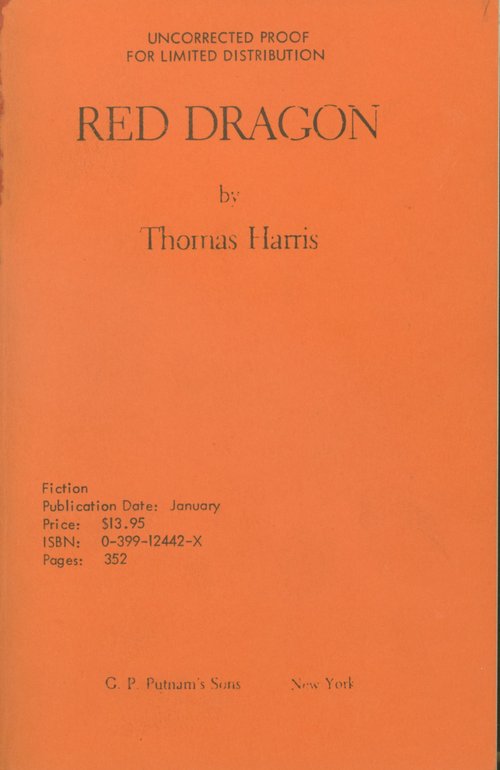


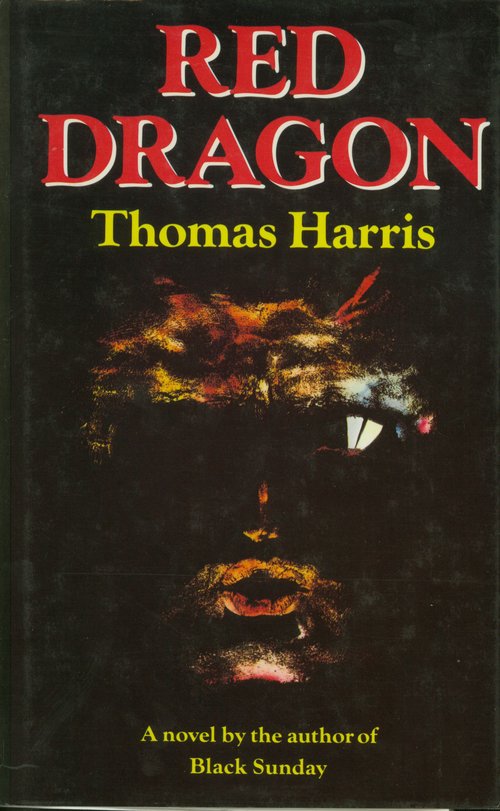
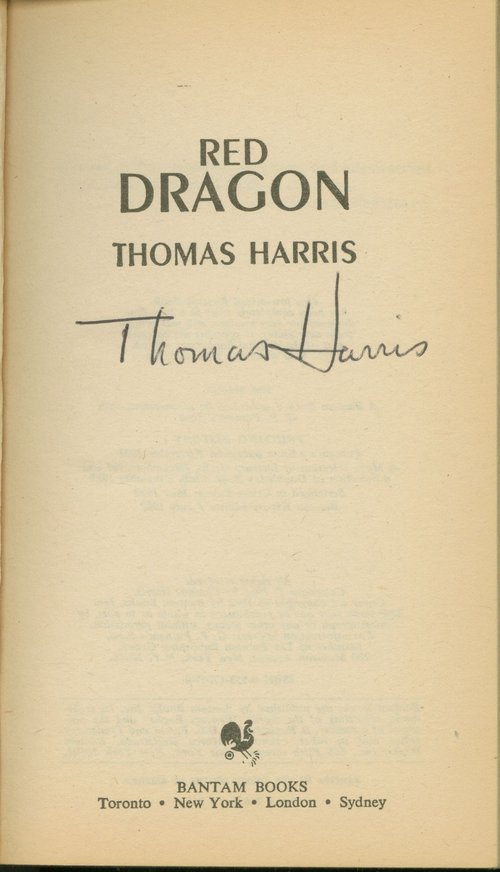
“The vast Delta night” served as the conduit for Harris’ first meeting with Dr. Hannibal Lecter and the creation of one of the best known characters in modern fiction. Author Tony Magistrale captured the essence of Lecter’s appeal when he described the doctor as an “angel with horns...both a paragon of civilized man and a connoisseur of human flesh.”
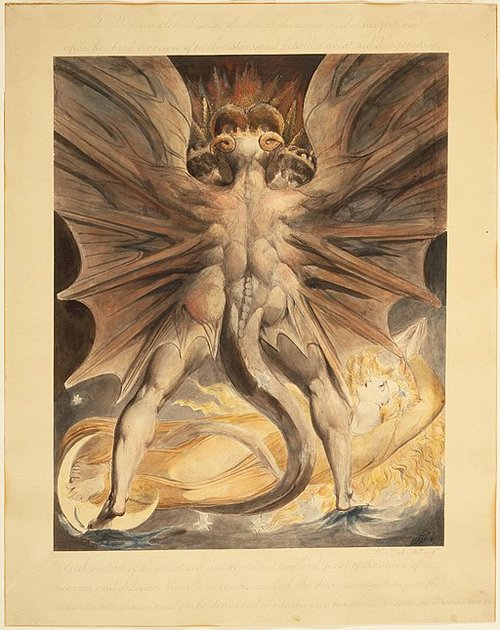
The Great Red Dragon
(The Great Red Dragon and the Woman Clothed with the Sun (Revelation 12: 1-4) / William Blake. (1803-1805). Housed at the Brooklyn Museum in New York City. No restrictions, via Wikimedia Commons)
One of William Blake’s illustrations of the Book of Revelation features the appearance described in Chapter 12 of a woman clothed in the light of the sun with the moon at her feet and stars over her head. She represents redemption and is the mother of the redeemer. While in childbirth a terrible red dragon (Satan) with seven heads appears and waits to kill the child while trampling the woman.
The character of Francis Dolarhyde embodies the essence of William Blake’s posthumously printed poem, “A Divine Image” reprinted in the front matter of Red Dragon. Dolarhyde certainly gives “cruelty a human heart” and provides “jealousy a human face,” but Harris’ Red Dragon exposes more than Dolarhyde’s bestial nature, it reveals the cruelty and jealousy constantly pulsing throughout society. The beast is best expressed in the jacket design of the British edition of the work. Animal or devil-like features fill the dark background with the head placed half in shadow and half in light.
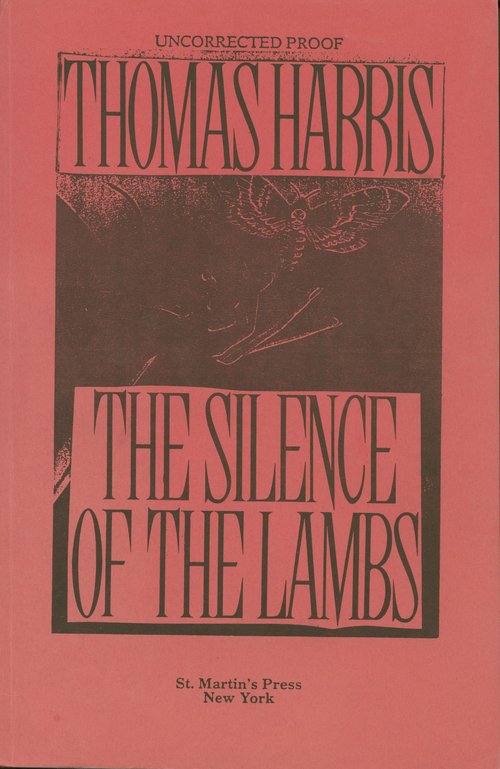
Clarice Starling and Dr. Hannibal Lecter
“Do you spook easily, Starling?” In his desperate search for the serial killer who flays his female victims, nicknamed “Buffalo Bill,” FBI Section Chief Jack Crawford places trainee Clarice Starling on an intellectual playing field with “the consummate gamesplayer,” Dr. Hannibal Lecter in the 1988 bestseller, The Silence of the Lambs. [Link to uncorrected proof]
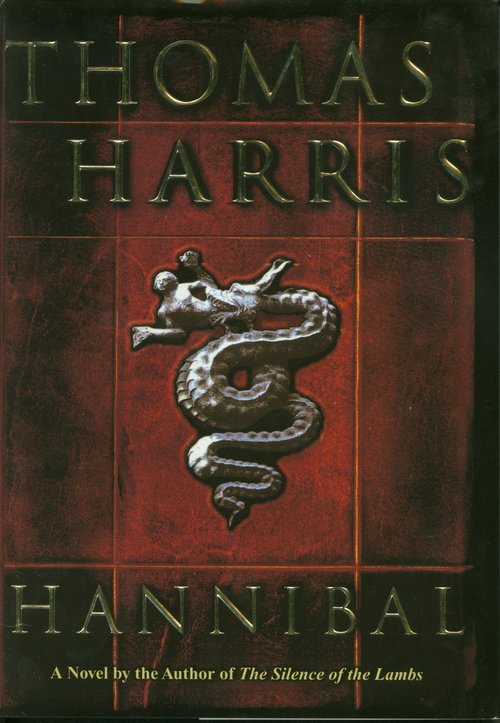
Hannibal
After almost a ten year hiatus, Thomas Harris revived the characters of Dr. Hannibal Lecter and FBI Special Agent Clarice Starling. Hannibal's cover art of the work features an image of the coat of arms of the Duke of Milan, indicating the Italian setting of much of the work and the connection Dr. Lecter feels with Italy.
Thomas Harris. Red Dragon. New York: Putnam’s Sons, 1981. Uncorrected Proof.
-- Red Dragon. New York: Putnam’s Sons, 1981.
-- Red Dragon. New York: Bantam Books, 1982. Advanced Reading Copy Signed by the author.
-- Red Dragon. London: Bodley Head, 1982. British printing.
-- The Silence of the Lambs. New York: St. Martin’s Press, 1988. Uncorrected proof.
-- The Silence of the Lambs. New York: St. Martin’s Press, 1988.
-- Hannibal. New York: Delacorte Press, 1999.
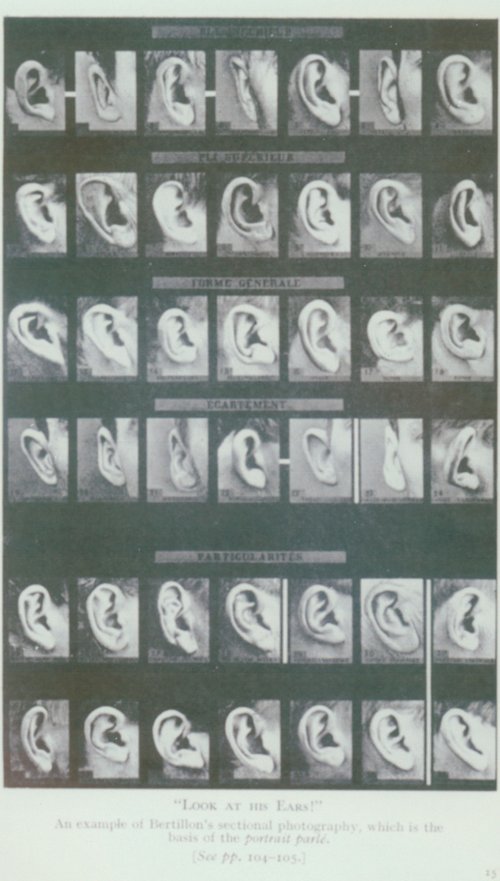
Bertillon System
Alphonse Bertillon, considered one of the first modern scientific criminologists, became Paris’ Chief of the Department of Judicial Identity in 1880. He standardized a method of measurement of the features of criminals and of crime scenes into a formulaic theory called “anthropometry” or the Bertillon system. Anthropometry was based on the classification of skeletal and other body measurements and statistics. Bertillon was also noted for his detailed photographs of crime scenes and mug shots. By 1888 France had adopted the system but it later became obsolete due to the much more precise science of fingerprinting.
["Look at his ears!" Plate image from Henry T. F. Rhodes. Alphonse Bertillon: Father of Scientific Detection. New York: Abelard-Schuman, 1956.]
